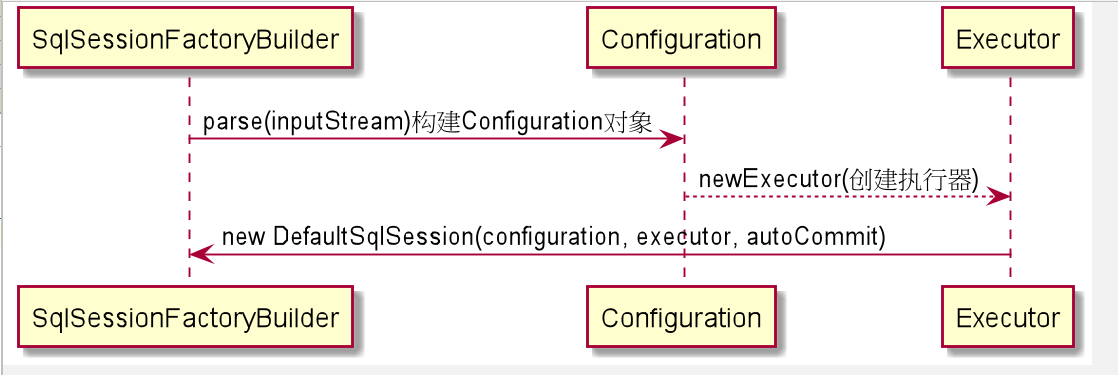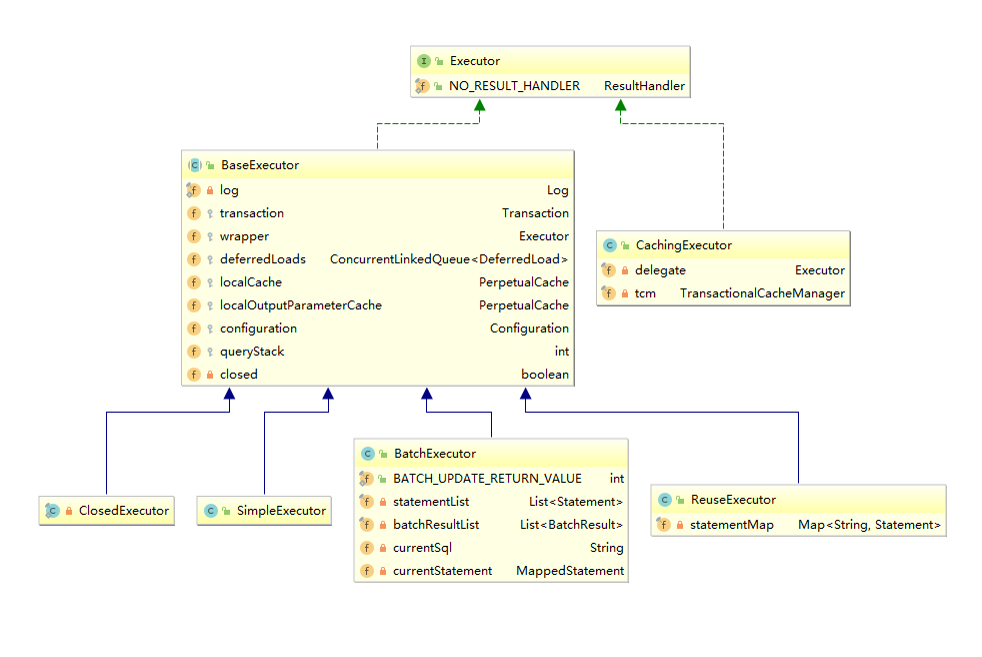Label (Space Separation): Mybatis
Actuator Overview
- Like tomcat, Mybatis has an executor, but not as complex as tomcat.
- The executor provides query, modification, transaction submission, transaction rollback, first-level cache cleaning, FlashStatement interface.
- An executor corresponds to a SqlSession, which is created by Configuration.
- Mybatis's executor is designed in delegation mode, and BaseExecutor, SimpleExecutor, ReuseExecutor, CachingExecutor are its implementation classes. CachingExecutor holds a delegate object, which implements the core functions of the executor.
- Caching Executor implements caching based on BaseExecutor.
- Simply put, Executor implements the interaction with the database.
Source code parsing
- Let's take a look at Mybatis's process of creating Executor

Execution process: OpenSession FromDataSource is a submethod within openSession(). When Mybatis created SqlSession, a new Executor was put into Default SqlSession. We can also understand that a SqlSession holds an Executor. Executors and database connection pools are not associated here.
private SqlSession openSessionFromDataSource(ExecutorType execType, TransactionIsolationLevel level, boolean autoCommit) {
Transaction tx = null;
try {
final Environment environment = configuration.getEnvironment();
final TransactionFactory transactionFactory = getTransactionFactoryFromEnvironment(environment);
tx = transactionFactory.newTransaction(environment.getDataSource(), level, autoCommit);
final Executor executor = configuration.newExecutor(tx, execType);
return new DefaultSqlSession(configuration, executor, autoCommit);
} catch (Exception e) {
closeTransaction(tx); // may have fetched a connection so lets call close()
throw ExceptionFactory.wrapException("Error opening session. Cause: " + e, e);
} finally {
ErrorContext.instance().reset();
}
}The code of the new Executor method in openSessionFromDataSource is as follows:
public Executor newExecutor(Transaction transaction, ExecutorType executorType) {
executorType = executorType == null ? defaultExecutorType : executorType;
executorType = executorType == null ? ExecutorType.SIMPLE : executorType;
Executor executor;
if (ExecutorType.BATCH == executorType) {
executor = new BatchExecutor(this, transaction);
} else if (ExecutorType.REUSE == executorType) {
executor = new ReuseExecutor(this, transaction);
} else {
executor = new SimpleExecutor(this, transaction);
}
if (cacheEnabled) {
executor = new CachingExecutor(executor);
}
executor = (Executor) interceptorChain.pluginAll(executor);
return executor;
}In Configuration, the new Executor method determines whether to generate BatchExecutor or ReuseExecutor or SimpleExecutord according to the type of executor Type.
cacheEnabled indicates whether Phase II caching is enabled. There is a delegate delegate delegate delegate object in CachingExecutor. There is a real executor object. Intereptor Chain is the responsibility chain of interceptor. Executor transforms in pluginAll method. The final executor is a proxy object.
PS: Actuator, interceptor and cache are the three most important parts of Mybatis.
Below is the Mybatis executor class diagram, from which you can see that the executor uses the delegation mode.